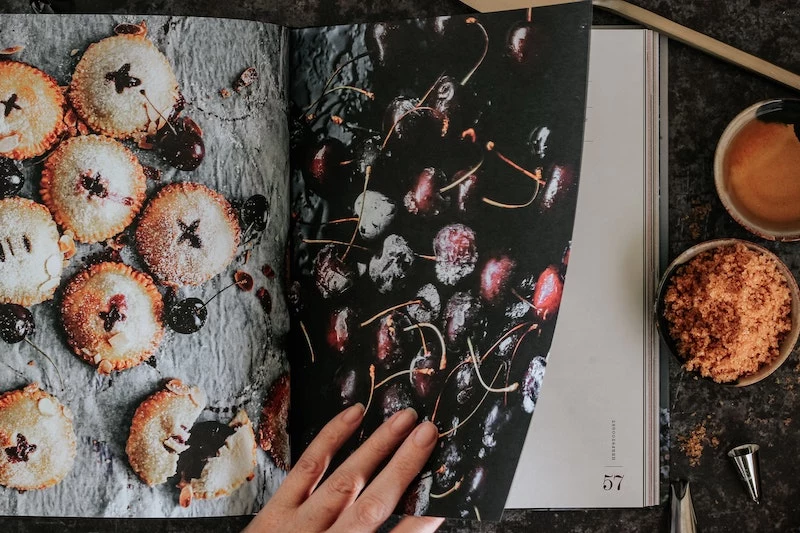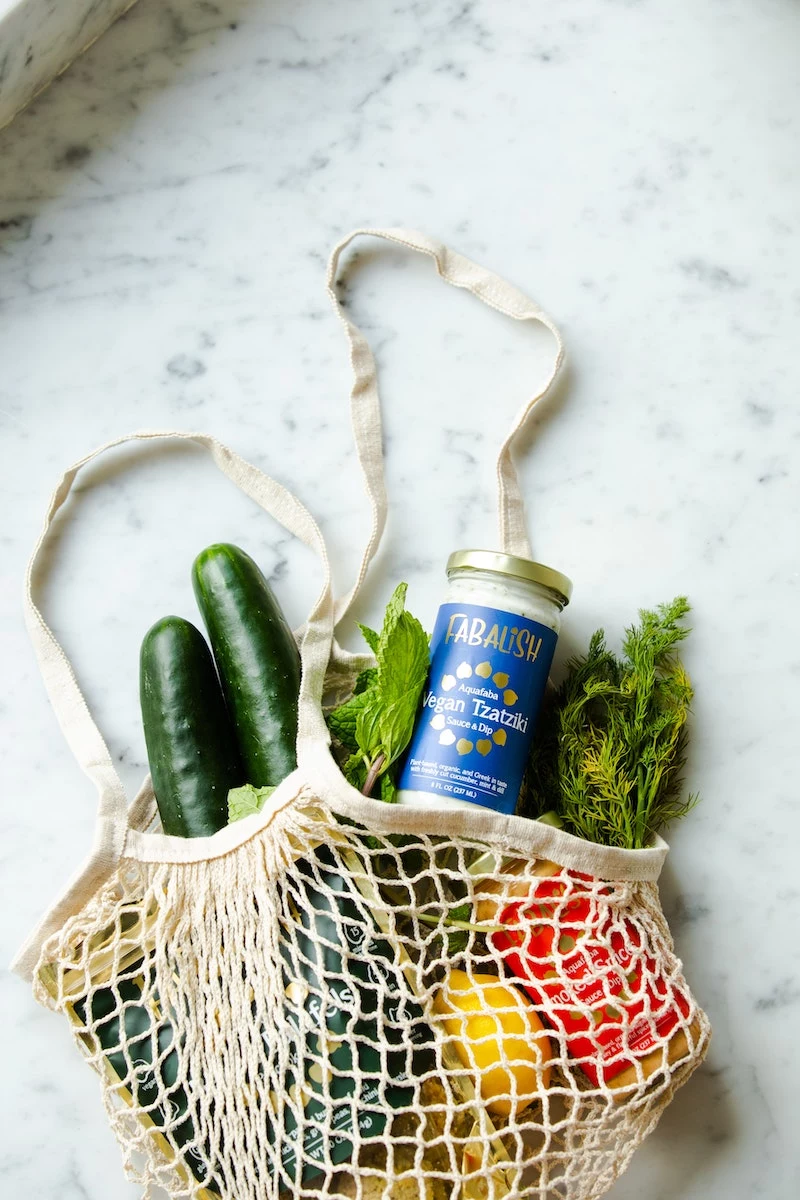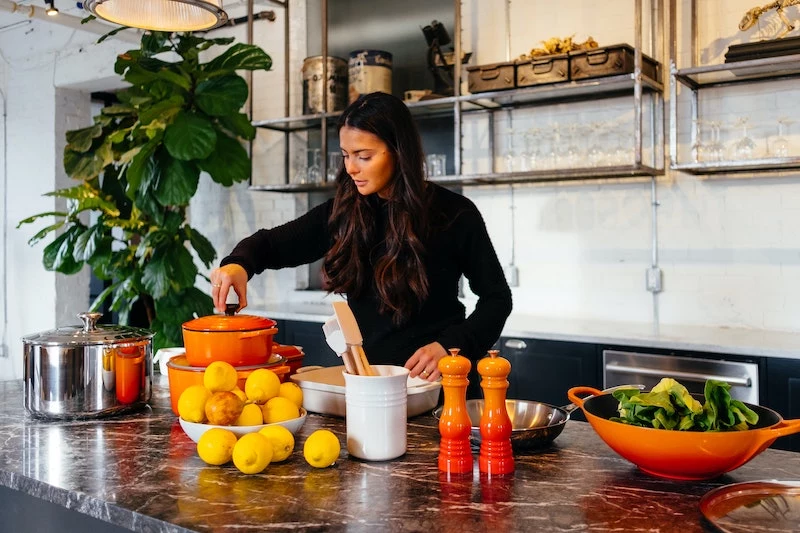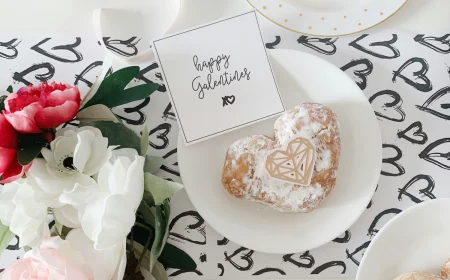How to Cook a Genuinely Special Dinner at Home (Without Freaking Out)
I’ve spent a long, long time in professional kitchens, and I’ve seen it all—the controlled chaos, the intense heat, the pressure. But the biggest lesson I ever learned is that a truly special meal has almost nothing to do with fancy, expensive ingredients. It’s all about intention.
In this article
So many people get stressed out cooking for someone they care about, thinking they need to recreate some over-the-top restaurant dish. I’m here to tell you that you can absolutely create a restaurant-quality experience, but the secret isn’t complexity. It’s about doing simple things incredibly well.
So, let’s just forget the stress. Think of this as a fun project. You’re the craftsperson, your knives are your tools, and fresh ingredients are your materials. Your real goal here is to create a feeling of warmth and care. This guide is built on all the methods the pros use every day to make things run smoothly, and they’ll help you pull off a memorable dinner, whether it’s a huge anniversary or just a quiet Tuesday night.
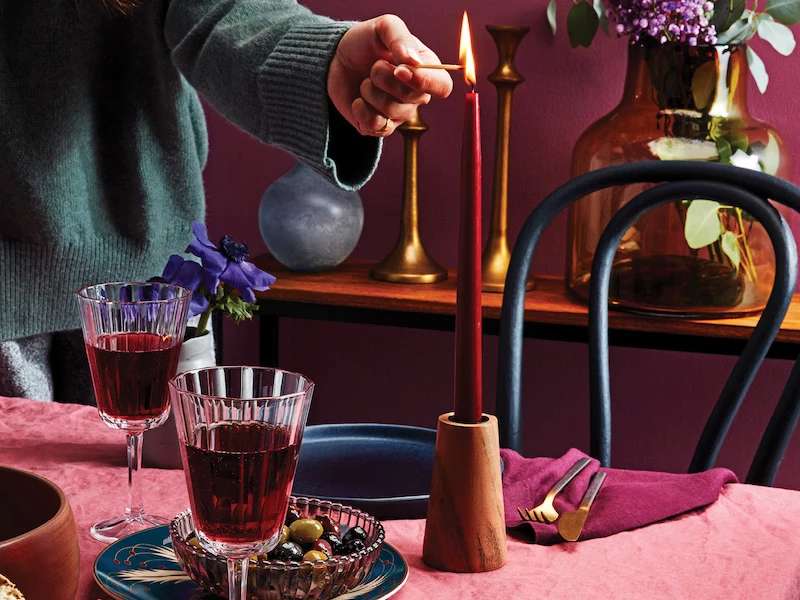
First Things First: Plan Your Menu Like a Pro
In a real kitchen, nothing—and I mean nothing—happens without a solid plan. We call it prep. Everything is ready to go before the first order comes in. This one principle is the most important key to a calm, successful cooking experience at home. A good plan gets rid of the panic.
Be Realistic, Not a Superhero
It’s so tempting to plan some ambitious five-course masterpiece. My advice? Don’t do it. To be frank, even for a seasoned chef, juggling multiple complex courses on a small home stove is a recipe for disaster. You risk spending the entire night sweating over pans instead of actually enjoying the company of your guest.
A much smarter approach is to focus your energy. Make one outstanding main course, and pair it with a super simple starter and an easy dessert. The starter can be something you just assemble, not cook. And there is absolutely no shame in buying a beautiful dessert from a good local bakery. Smart cooks know where to put their effort.
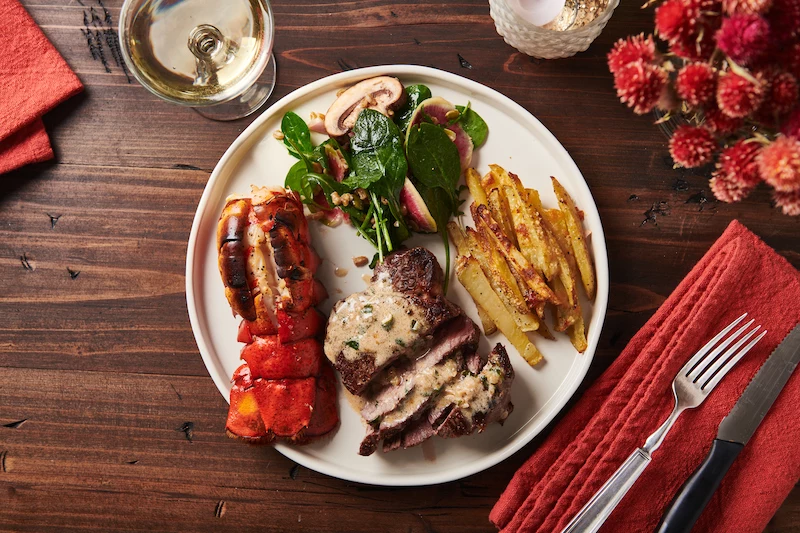
Here are a few menu ideas that work, with some real-world instructions thrown in:
- For the Beginner: Simple & Elegant. This meal is all about building confidence. You can get all the ingredients for around $25-$35.
- Starter: A simple salad with a killer lemon vinaigrette. A lesser-known trick is the 3-to-1 ratio: just shake 3 parts good olive oil and 1 part lemon juice in a jar with a pinch of salt and pepper. Done.
- Main: Pan-seared chicken thighs with roasted root vegetables. Chicken thighs are incredibly forgiving and stay juicy. Just toss chopped carrots and potatoes with olive oil and salt, and roast them at 400°F (200°C) for about 30-35 minutes. The chicken can be seared in a pan and then finished in the same oven for the last 15-20 minutes.
- Dessert: A high-quality bar of dark chocolate (think 70% cacao or higher) served with some fresh berries. Simple, classy, and requires zero work.
- For the Intermediate Cook: The Steakhouse Vibe. This is where you show off a bit of technique. Budget around $40-$60, mostly for a quality piece of meat.
- Starter: A classic wedge salad with a store-bought blue cheese dressing. Easy but feels deluxe.
- Main: A perfectly cooked steak using the reverse sear method. This is a game-changer: you cook the steak slowly in a low oven (around 275°F / 135°C) until it’s about 15 degrees below your target temperature, then give it a screaming hot sear in a pan for 60 seconds per side to get that perfect crust. It guarantees an evenly cooked interior.
- Dessert: Chocolate lava cakes. They look incredibly impressive but are surprisingly straightforward. You can even find box mixes at most grocery stores that are honestly pretty darn good.
- For the Advanced Cook: Precision & Finesse. This meal involves more moving parts and timing, so clear your schedule.
- Starter: Seared scallops with a simple brown butter sauce. The key is a screaming hot pan and not overcooking them—60 to 90 seconds per side is all you need.
- Main: Pan-seared duck breast with a cherry reduction sauce, served alongside a creamy parmesan risotto. The risotto requires constant stirring, so this is a hands-on main course.
- Dessert: A homemade panna cotta. Pro tip: make this the day before. It needs several hours to set, and having it done ahead of time is a huge relief on the day of.
- Take the steak out of the fridge 30-45 minutes before you plan to cook. A less-chilled steak cooks more evenly.
- Pat it COMPLETELY dry with paper towels. I can’t say this enough.
- Season it aggressively on all sides with coarse salt and freshly cracked black pepper. Be more generous than you think you need to be.
- Add a thin layer of high-smoke-point oil (like grapeseed or avocado) to a heavy pan and heat it over medium-high heat. When the oil shimmers, it’s ready.
- Gently place the steak in the pan, laying it away from you to avoid any hot oil splashing back.
- Now, don’t touch it. Let it sit for 3-4 minutes to form a deep, brown crust.
- Flip it. After another minute or two, add a tablespoon of unsalted butter, a crushed garlic clove, and a sprig of rosemary or thyme to the pan.
- Tilt the pan toward you and use a large spoon to continuously baste the steak with that bubbling, fragrant butter for about a minute. This is a classic finishing touch.
- Remove the steak from the pan and let it rest on a cutting board for at least 10 minutes before you even think about slicing it. This is critical!
- Pour off any excess fat from the pan.
- Put the pan back on medium heat. Add a finely chopped shallot and cook for 30 seconds.
- Now, deglaze the pan. This just means adding liquid to lift up all those tasty brown bits. For a beef steak, use about half a cup of a dry red wine like a Cabernet or Merlot. For chicken or pork, a dry white wine like Sauvignon Blanc or Pinot Grigio is perfect. No wine? Beef or chicken stock works great, too. Use a wooden spoon to scrape the bottom of the pan clean as the liquid bubbles.
- Let the liquid reduce by about half, which concentrates the flavor.
- Turn the heat to low and whisk in a tablespoon of cold butter. This makes the sauce glossy and rich. Season it, and you’re done. You just made a pro-level pan sauce.
- Morning: Quick grocery run for the freshest items (herbs, seafood, bread).
- Early Afternoon: Do all chopping, measuring, and sauce prep. Set the table now, not later.
- 1 Hour Before: Chill wine. Tidy up the kitchen and living space. Light candles.
- Guest Arrives: Assemble the starter. Pour drinks. Relax.
- You’ll end the night with a surprisingly clean kitchen.
- You won’t have to face a daunting pile of dishes after your guest leaves.
- For a sophisticated vibe: Try a ‘Cool Jazz’ or ‘Bossa Nova’ playlist. Think Stan Getz or João Gilberto.
- For a modern, relaxed feel: An ‘Instrumental Indie’ or ‘Downtempo’ playlist works wonders.
- For pure romance: You can’t go wrong with classic soul from artists like Otis Redding or Etta James.
Oh yeah, and when you’re planning, think about balance. If your main course is rich and creamy like that risotto, make sure your starter is light and acidic. A plate with a variety of colors and textures just naturally looks more appetizing.
The ‘Why’ Behind Great Cooking
Understanding a little bit of the science behind cooking is what separates guessing from knowing. It’s how you turn happy accidents into repeatable success.
That Golden-Brown Goodness (The Maillard Reaction)
Probably the most important thing happening in your pan is called the Maillard reaction. It’s a fancy term for the browning process that happens when you sear meat, toast bread, or roast vegetables. This isn’t burning; it’s a chemical reaction that creates hundreds of new, complex flavor compounds. It’s the difference between a sad, grey, steamed chicken breast and a deeply browned, delicious one.
To get a great sear, you only need three things:
First, a bone-dry surface. Moisture is the biggest enemy of browning. Water turns to steam, which prevents the pan from getting hot enough for the Maillard reaction to kick in. So, pat your meat or fish completely dry with paper towels. I mean it. Blot it until it’s dry.
Second, high heat. Get your pan hot before you add anything. A heavy-bottomed pan, like a good old cast iron or stainless steel one, is perfect because it holds heat evenly. You should hear a loud, confident sizzle the moment the food hits the pan. That’s the sound of victory.
And third, give it space! Don’t overcrowd the pan. If you cram too much in there, the temperature will plummet and the food will just steam in its own juices. If you have to, cook in batches. It’s one extra step that pays off big time in the final result.
Good to Know: Choosing the Right Fat
By the way, the oil you use matters. Different fats have different “smoke points,” which is the temperature at which they start to burn and taste bitter. Extra virgin olive oil, for example, has a low smoke point. It’s amazing for salad dressings, but it’s a terrible choice for high-heat searing. For that, you want a neutral oil with a high smoke point. Think grapeseed, avocado, canola, or sunflower oil. Clarified butter (ghee) is another fantastic, pro-level option that adds amazing flavor without burning.
Your New Best Friend: A Digital Thermometer
The single best tool you can buy to become a better cook is a good instant-read digital thermometer. It ends all the guesswork. A common mistake is trying to judge doneness by sight or feel, but even the pros use thermometers constantly. No one has X-ray vision.
You don’t have to break the bank, either. You can find a solid, reliable digital thermometer for about $20 online or at stores like Target. If you want to invest in what the professionals use, look for a Thermapen—it’s unbelievably fast and accurate, but it’ll set you back closer to $80-$100. Either one will change your cooking forever.
And remember carryover cooking! Food keeps cooking from residual heat even after you take it out of the pan. A thick steak can easily rise another 5 to 10 degrees as it rests. So, always pull your meat just before it hits your target temp. For a perfect medium-rare steak (130-135°F), I pull it at 125°F. For chicken, which needs to reach 165°F to be safe, I pull it at 160°F and let it rest. This resting period is non-negotiable; it allows the juices to redistribute, making the final product unbelievably tender and moist.
Pro-Level Habits for Your Home Kitchen
These are the little methods and habits that separate a calm, collected cook from a frantic, stressed-out one. They’re simple, but they make all the difference.
Master Your Mise en Place
Mise en place is a French phrase that means “everything in its place,” and in professional kitchens, it’s our religion. Before you even think about turning on the stove, do everything else. Read the entire recipe. Chop all your vegetables. Measure out your spices into little bowls. Get out every pan and tool you’ll need. Your counter should look like the set of a cooking show right before the host walks on.
I learned this the hard way, of course. I was a young cook making a fancy sauce and realized—midway through—that I hadn’t chopped the parsley. I turned away from the stove for just 30 seconds to chop it, and in that time, my sauce broke. It was an expensive, stressful mistake that proper prep would have completely prevented. It turns cooking from a frantic race into a calm, enjoyable process.
How to Get That Perfect Steak Sear
Let’s put it all together. A common point of anxiety is knowing what to even buy. My advice? Walk right up to the butcher counter and say, “Hi, I’m making a special dinner and want to pan-sear a steak for two. What’s a great-tasting, 1.5-inch thick cut you’d recommend for under $30?” They’ll likely point you to a beautiful ribeye or New York strip, and you’ll walk away with the perfect cut.
Here’s how you cook it:
Making a Dead-Simple (But Amazing) Pan Sauce
After you’ve rested that beautiful steak, don’t you dare wash that pan! All those brown bits stuck to the bottom are called fond, and they are pure flavor gold. This is how you make an incredible sauce in two minutes.
It All Starts at the Store
A great meal really begins at the market. Instead of just grabbing a plastic-wrapped package of something, try talking to the people behind the counter. A good butcher or fishmonger is a fantastic resource. For fish, look for a dedicated shop. Fresh fish shouldn’t smell “fishy”—it should smell clean, like the ocean. Its eyes should be clear, not cloudy.
And don’t fall into the trap of thinking expensive is always better. A skilled cook can make an inexpensive cut of meat like a chuck roast, braised with care for a few hours, taste more satisfying than a poorly cooked filet mignon. And always focus on what’s in season. Seasonal produce is always fresher, cheaper, and tastes worlds better.
Setting the Scene: The Little Things That Matter
The experience isn’t just about the food. It’s the whole atmosphere. In a restaurant, we call this the “front of house.” At home, you’re in charge of that, too.
Lighting is everything. Turn off that harsh overhead kitchen light. Please. Use lamps or candles to create a warm, soft glow. It makes everyone and everything look better, instantly.
Set a real table. It doesn’t have to be fancy, but it should feel intentional. Use placemats and real cloth napkins if you have them. It sends a clear signal that this isn’t just another meal; it’s a special occasion.
Finally, pace the meal. Don’t rush to clear the starter plates and immediately serve the main. Let the conversation breathe. A relaxed pace feels luxurious and thoughtful.
What to Do When Things Go Wrong
Okay, let’s be real. Something might go a little sideways. You might over-reduce the sauce, or the vegetables might get a little too roasted. It happens. All the time. Even to the pros.
The important thing is to just stay calm and roll with it. Your guest isn’t a food critic with a clipboard. They’re there because they like you. If your sauce is too thin, just let it bubble for a few more minutes. If your steak is a little more well-done than you planned, don’t apologize! Just slice it thin, arrange it nicely, and pour that amazing pan sauce you made right over the top. I promise, they will think it’s the best thing they’ve ever eaten.
The effort you’re making is the real gift here. You took the time to create something with your own two hands for someone. That is a powerful and wonderful thing. Now, go cook something amazing.
Inspirational Gallery
Scent is the most powerful memory trigger. The aroma of garlic sautéing in olive oil or bread warming in the oven does more to say ‘welcome’ than any words could.
Before your guest arrives, consider the aromatic atmosphere. A simple simmer pot on the stove with water, citrus peels, and a cinnamon stick can fill your home with a warm, inviting fragrance that sets a special tone from the moment the door opens.
How do professional chefs make simple food look so elegant?
It’s a game of composition. First, think in odd numbers—three asparagus spears look better than four. Use the ‘negative space’ on the plate; don’t crowd it. Add height by layering components, like placing your protein on a bed of purée. Finally, a small detail like a drizzle of high-quality olive oil, a sprinkle of flaky sea salt from a brand like Maldon, or a few fresh herb leaves makes all the difference.
The Classic Aperitif: A Negroni. Its bittersweet profile with gin, Campari, and sweet vermouth is designed to stimulate the appetite. It’s sophisticated and simple to make (equal parts).
The Elevated Non-Alcoholic: A spritz using a quality non-alcoholic aperitivo like Ghia or Wilfred’s, topped with tonic water and an orange peel. It offers the same complex, bitter notes without the alcohol.
Either option signals that the evening is an occasion, a deliberate pause from the everyday.
Never underestimate the power of lighting. Ditch the harsh overhead light in favor of a layered approach. A couple of well-placed table lamps, a floor lamp in a corner, and candlelight on the table create soft pools of light that are instantly intimate and flattering. It’s the single easiest way to transform your dining room into a romantic bistro.
One pan can change your cooking: A heavy, well-seasoned cast-iron skillet. Forget fancy gadgets. A pan from a brand like Lodge or Staub will give you that perfect, restaurant-quality sear on a steak, beautifully crisp skin on a chicken thigh, and can even go straight from stovetop to oven. It’s an investment in better flavor.
The secret? The ‘chef’s bowl.’ Keep a large bowl on your counter as you prep. All your vegetable peels, scraps, and packaging go directly into it. It keeps your cutting board clear and makes cleanup a one-step trip to the compost or trash. It’s a core part of the professional’s *mise en place*.
Music is the invisible guest at your table, setting the entire emotional tone. The goal is atmosphere, not a concert, so choose something that can live comfortably in the background.
A study on olive oil found that the choice of oil can contribute up to 70% of the final flavor in simple dishes.
This illustrates a core principle: when you have few ingredients, they must be exceptional. Using a peppery, fresh-pressed extra virgin olive oil from a trusted producer like Graza or Brightland isn’t just an upgrade; it’s the difference between a forgettable meal and an unforgettable one.
A memorable centerpiece doesn’t have to be a florist’s creation. Take inspiration from the season. A few artfully arranged branches from your garden, a trio of small gourds in autumn, or even a simple bowl of vibrant lemons or pomegranates can provide a beautiful, natural focal point that feels personal and effortless.
